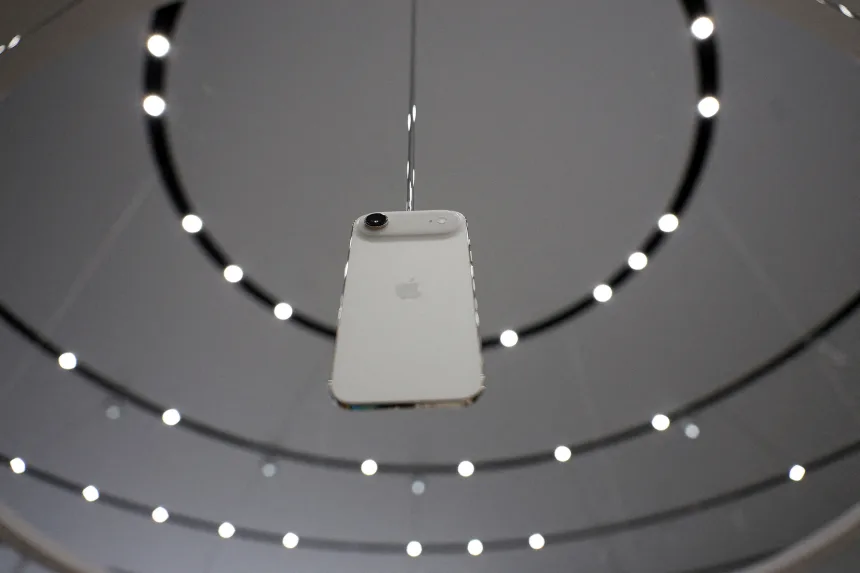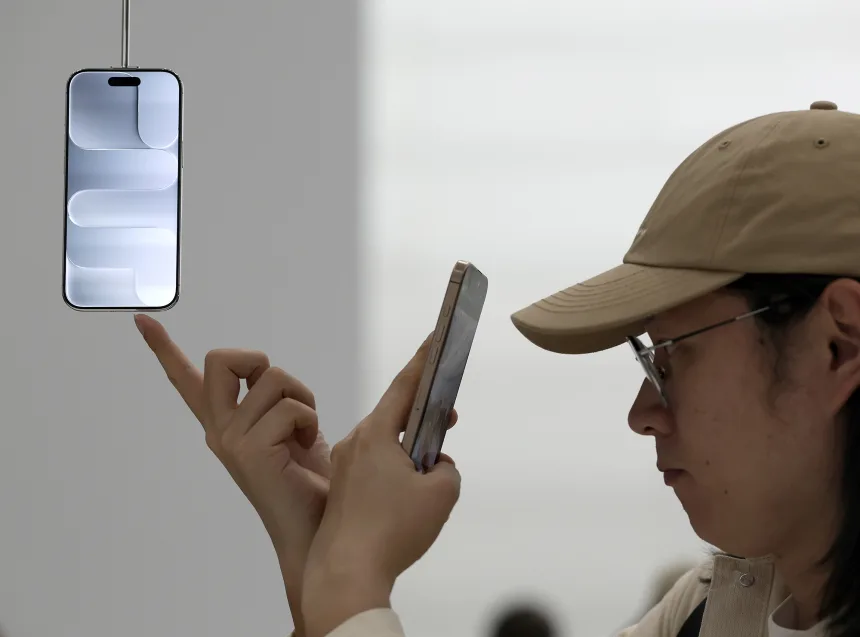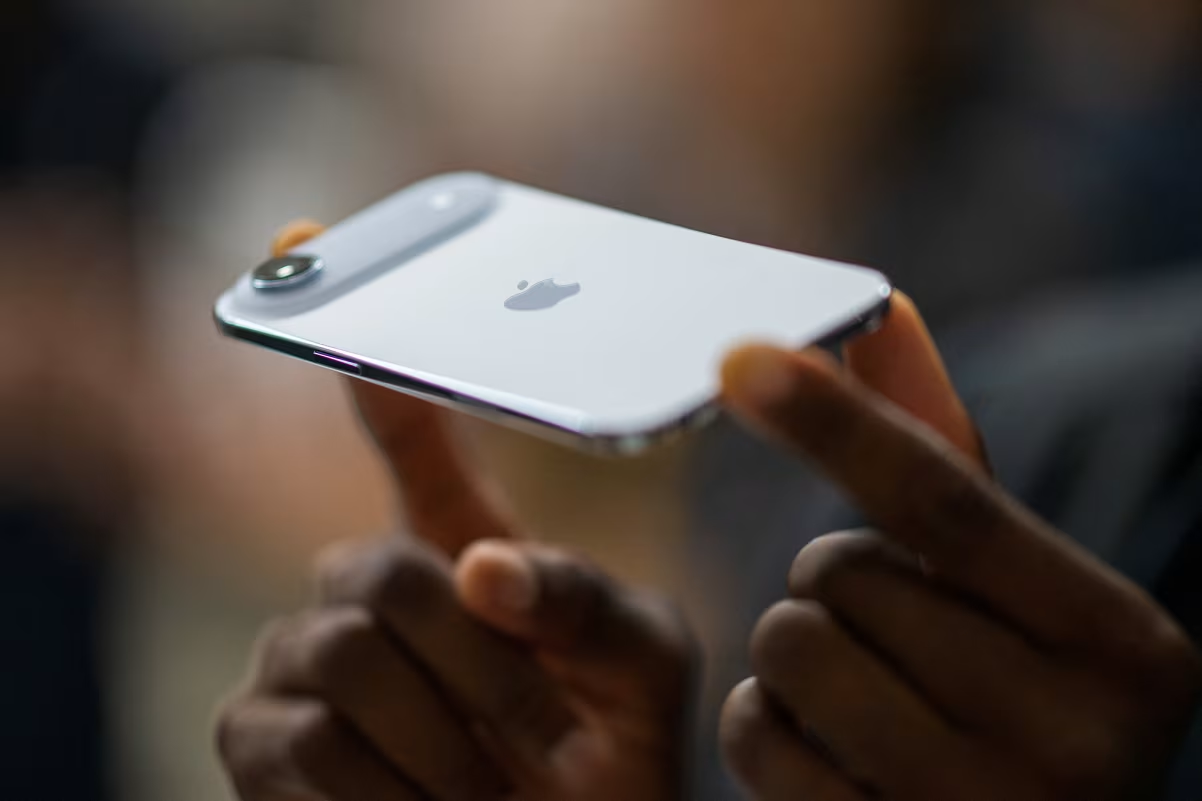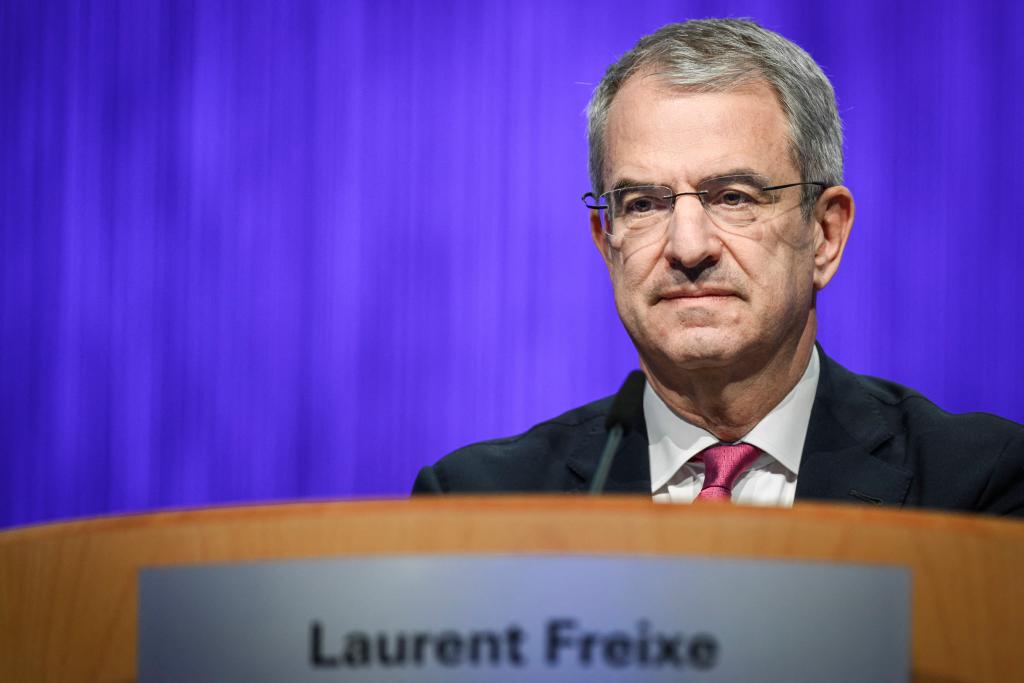A thinner, lighter iPhone aims to reignite consumer excitement as Apple bets on innovation to spark the next upgrade supercycle.
Apple is hoping to make smartphones exciting again. On Tuesday, the company unveiled the iPhone Air, its first major design overhaul in nearly a decade, describing it as “so thin and light, it seems to disappear in your hands.”

The debut comes at a critical moment for Apple. After years of lackluster sales across the smartphone industry, consumers are holding onto their devices longer than ever, often replacing them only out of necessity. Apple’s iPhone 16 launch weekend sales in 2024 were estimated to be weaker than the year before, adding pressure for the company to deliver a game-changing product with the iPhone Air and upcoming iPhone 17 lineup.
A Market in Transition
The smartphone industry has been in recovery mode. After suffering its largest-ever quarterly decline in late 2022 and eight consecutive quarters of contraction through 2023, global sales finally grew 1.4% year-over-year in Q2 2025, according to IDC. Still, challenges like inflation, unemployment, and tariff uncertainty continue to weigh on demand.

Meanwhile, consumer upgrade cycles have stretched dramatically. Morgan Stanley estimates replacement cycles now average 4.7 years, with the potential to reach five years by 2026. Verizon’s CEO said in 2024 that subscribers were holding onto phones for “way over 36 months,” far longer than in the past, when yearly upgrades were common.
Why the iPhone Air Matters
For Apple, the iPhone Air is more than just another annual refresh. It represents a chance to recapture the excitement once generated by groundbreaking releases like the iPhone 6 and iPhone X.

Despite featuring fewer cameras and scaled-back specs compared to the iPhone 17 Pro, the Air’s sleek, lightweight design could appeal to consumers who want something genuinely new rather than incremental improvements.
Analysts see promise. IDC’s Francisco Jeronimo called the iPhone 17 lineup “the biggest design overhaul since the iPhone X,” noting that this alone could spur upgrades. Wedbush Securities’ Dan Ives estimated that 315 million of Apple’s 1.5 billion iPhone users haven’t upgraded in four years and are now ripe for a refresh.
Beyond Looks: What’s Inside
The iPhone Air isn’t just about thinness. It debuts Apple’s new N1 wireless networking chip, designed to enhance Wi-Fi and Bluetooth performance — a move that could be pivotal if Apple pursues its rumored vision of a portless iPhone.
The emphasis on slimness also hints at Apple’s broader design ambitions. If the company eventually develops a foldable iPhone, keeping thickness in check will be key to consumer adoption, especially compared with bulkier foldable devices from Samsung, Motorola, and Google.
Setting the Stage for the Future
Apple’s reinvention of the iPhone comes amid speculation that AI-driven devices like smart glasses could eventually shift how consumers interact with technology. Meta, Google, and Samsung are all investing in AR-powered wearables, while OpenAI is collaborating with former Apple design chief Jony Ive on a mysterious AI device.

Apple, too, acknowledges this potential shift. During testimony in the Google search antitrust trial, Apple’s Eddy Cue suggested that “you may not need an iPhone 10 years from now.” The iPhone Air could be Apple’s first step in preparing for that future.
A Defining Moment for Apple
Whether the iPhone Air becomes another cultural milestone like the iPhone 6 remains to be seen. But its bold redesign, lightweight build, and forward-looking features mark an important moment for Apple as it seeks to spark consumer excitement, accelerate upgrades, and set the course for the iPhone’s next chapter.

















